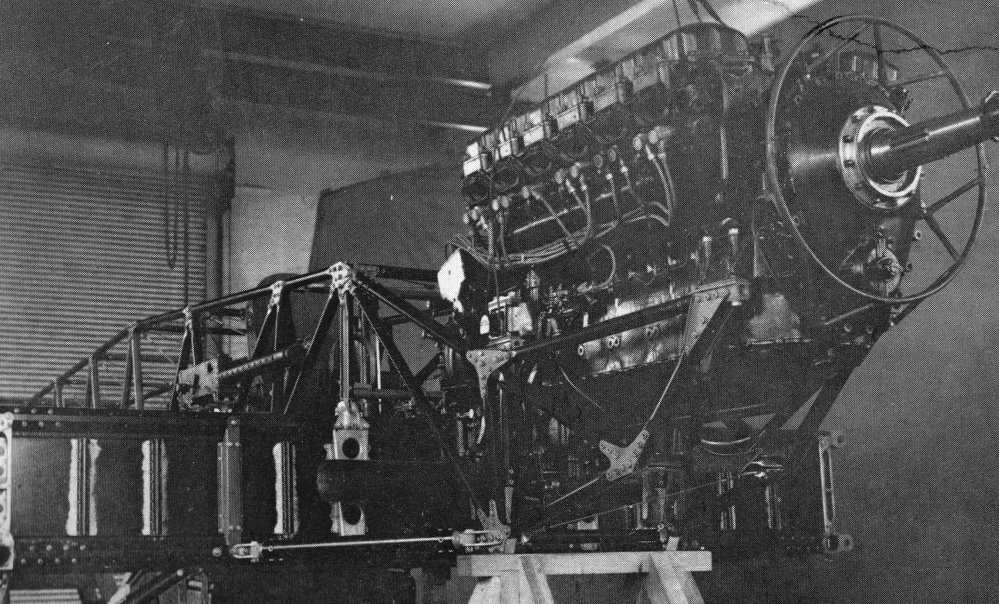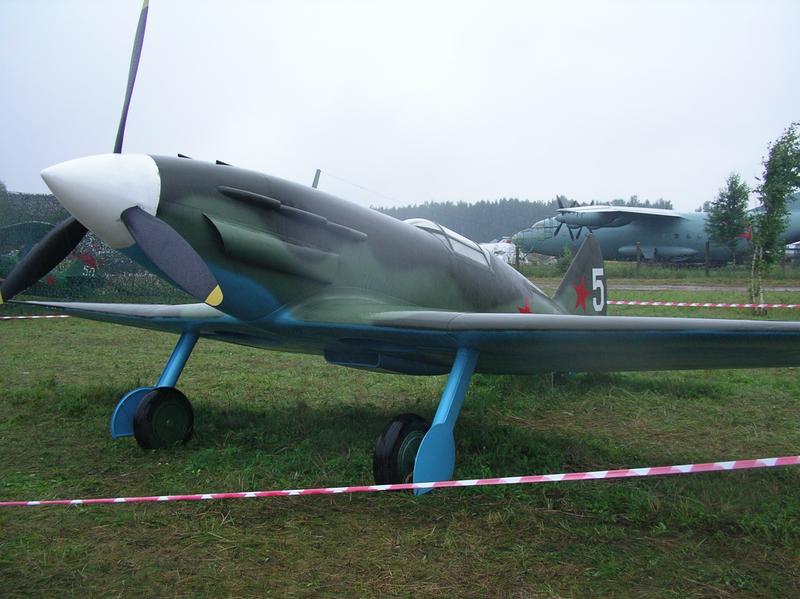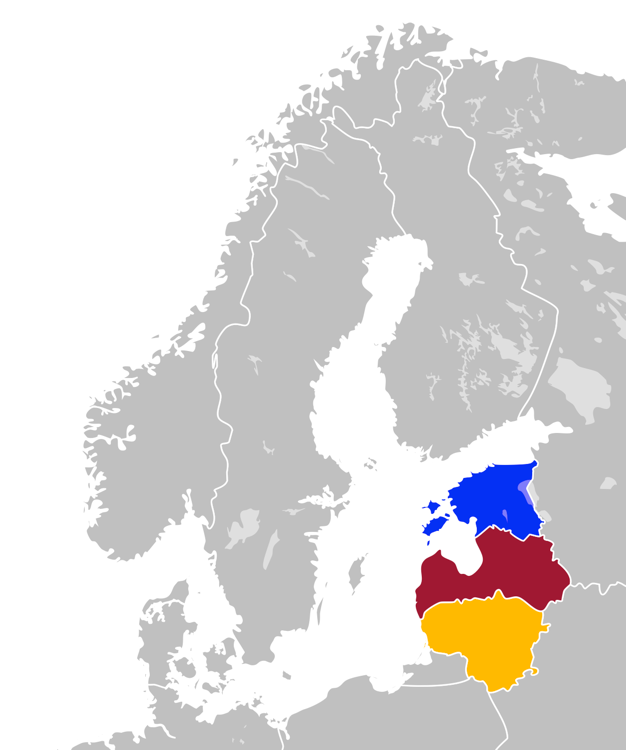|
Mikhail Kuznetsov (pilot)
Mikhail Vasilyevich Kuznetsov (russian: Михаи́л Васи́льевич Кузнецо́в; – 15 December 1989) was a regimental commander flying ace in the Soviet Air Forces during the Second World War who was twice awarded the title Hero of the Soviet Union. After the war he became a general-major. Early life Kuznetsov was born on to a Russian family in Agarino village, located within the present-day borders of the Moscow oblast. Having moved to the city of Moscow in 1921, he went on to complete his seventh grade of school in 1930, after which he worked as an electrician at a tannery until 1932. From then until he entering the military in mid 1933 he worked for the Komsomol of Kirovsky district of the city, serving as deputy chairman of a bureau of young pioneers, secretary of a university Komsomol committee, and secretary of a factory Komsomol committee. After graduating from the Yeisk Military School of Marine and Observer Pilots in December 1934 he was assigned to ... [...More Info...] [...Related Items...] OR: [Wikipedia] [Google] [Baidu] |
Kashirsky Uyezd
Kashirsky Uyezd (''Каши́рский уе́зд'') was one of the subdivisions of the Tula Governorate of the Russian Empire. It was situated in the northern part of the governorate. Its administrative centre was Kashira. Demographics At the time of the Russian Empire Census of 1897, Kashirsky Uyezd had a population of 66,535. Of these, 99.9% spoke Russian and 0.1% German German(s) may refer to: * Germany (of or related to) **Germania (historical use) * Germans, citizens of Germany, people of German ancestry, or native speakers of the German language ** For citizens of Germany, see also German nationality law **Ger ... as their native language. Демоскоп Weekly - Приложение. Справочник статистических показателей References [...More Info...] [...Related Items...] OR: [Wikipedia] [Google] [Baidu] |
Southwestern Front (Soviet Union)
The Southwestern Front was a front of the Red Army during the Second World War, formed thrice. It was first created on June 22, 1941 from the Kiev Special Military District. The western boundary of the front in June 1941 was 865 km long, from the Pripyat River and the town of Wlodawa to the Prut River and the town of Lipkany at the border with Romania. It connected to the north with the Western Front, which extended to the Lithuanian border, and to the south with the Southern Front, which extended to the city of Odessa on the Black Sea. Operational history The Southwestern Front was on the main axis of attack by the German Army Group South during Operation Barbarossa. At the outbreak of war with Germany, the Front was commanded by Mikhail Kirponos and contained the Soviet 5th, 6th, 26th, and 12th Armies along the frontier. 16th and 19th Armies were in reserve behind the forward forces. These forces took part in the tank battles in western Ukraine and were surrounded ... [...More Info...] [...Related Items...] OR: [Wikipedia] [Google] [Baidu] |
Hawker Hurricane
The Hawker Hurricane is a British single-seat fighter aircraft of the 1930s–40s which was designed and predominantly built by Hawker Aircraft Ltd. for service with the Royal Air Force (RAF). It was overshadowed in the public consciousness by the Supermarine Spitfire during the Battle of Britain in 1940, but the Hurricane inflicted 60 percent of the losses sustained by the Luftwaffe in the campaign, and fought in all the major theatres of the Second World War. The Hurricane originated from discussions between RAF officials and aircraft designer Sir Sydney Camm about a proposed monoplane derivative of the Hawker Fury biplane in the early 1930s. Despite an institutional preference for biplanes and lack of interest by the Air Ministry, Hawker refined their monoplane proposal, incorporating several innovations which became critical to wartime fighter aircraft, including retractable landing gear and the more powerful Rolls-Royce Merlin engine. The Air Ministry ordered Hawk ... [...More Info...] [...Related Items...] OR: [Wikipedia] [Google] [Baidu] |
Yakovlev Yak-9
The Yakovlev Yak-9 (russian: Яковлев Як-9) is a single-engine, single-seat multipurpose fighter aircraft used by the Soviet Union and its allies during World War II and the early Cold War. It was a development of the robust and successful Yak-7B fighter, which was based in turn on the tandem-seat advanced trainer known as the Yak-7UTI. The Yak-9 started arriving in Soviet fighter regiments in late 1942 and played a major role in retaking air superiority from the Luftwaffe's new Focke-Wulf Fw 190 and fighters during the grand Battle of Kursk in summer 1943. The Yak-9 had a cut down rear fuselage with an unobscured canopy. Its lighter metal structure allowed for an increased fuel load and armament over previous models built from wood.Gustin 2003, p. 120. The Yak-9 was manoeuvrable at high speeds when flying at low and medium altitudes and was also easy to control, qualities that allowed it to be one of most produced Soviet fighters of World War II. It was produced in ... [...More Info...] [...Related Items...] OR: [Wikipedia] [Google] [Baidu] |
Yakovlev Yak-1
The Yakovlev Yak-1 (russian: Яковлев Як-1) was a Soviet fighter aircraft of World War II. The Yak-1 was a single-seat monoplane with a composite structure and wooden wings; production began in early 1940.Angelucci and Matricardi 1978, p. 239. The Yak-1 was a maneuverable, fast and competitive fighter aircraft. The composite-wooden structure made it easy to maintain and the engine proved to be reliable.Snedden 1997, p. 71. It formed the basis for subsequent developments from the Yakovlev bureau. It was the founder of a family of aircraft, with some 43,000 being built.Gunston 1998, p. 88.Ethell 1995, p. 163. As a reward, designer Alexander Yakovlev was awarded the Order of Lenin ( Russian ) (the highest civilian decoration bestowed by the Soviet Union), a 100,000 ruble prize, and a ZIS motor car.Jackson 2003, p. 160.Matricardi 2006, p. 77. Design and development Before the war, Yakovlev was best known for building light sports aircraft. His Yak-4 light bomb ... [...More Info...] [...Related Items...] OR: [Wikipedia] [Google] [Baidu] |
Mikoyan-Gurevich MiG-3
The Mikoyan-Gurevich MiG-3 (russian: Микоян и Гуревич МиГ-3) was a Soviet fighter-interceptor used during World War II. It was a development of the MiG-1 by the OKO (opytno-konstruktorskij otdel — Experimental Design Department) of Zavod (Factory) No. 1 in Moscow to remedy problems found during the MiG-1's development and operations. It replaced the MiG-1 on the production line at Factory No. 1 on 20 December 1940 and was built in large numbers during 1941 before Factory No. 1 was converted to build the Ilyushin Il-2. On 22 June 1941, at the beginning of Operation Barbarossa, some 981 were in service with the Soviet Air Forces (VVS), the Soviet Air Defence Forces (PVO) and Soviet Naval Aviation. The MiG-3 was difficult to fly in peacetime and much more so in combat. Originally designed as a high-altitude fighter-interceptor, combat over the Eastern Front was generally at lower altitudes, where it was inferior to the German Messerschmitt Bf 109 as well as m ... [...More Info...] [...Related Items...] OR: [Wikipedia] [Google] [Baidu] |
Prague
Prague ( ; cs, Praha ; german: Prag, ; la, Praga) is the capital and largest city in the Czech Republic, and the historical capital of Bohemia. On the Vltava river, Prague is home to about 1.3 million people. The city has a temperate oceanic climate, with relatively warm summers and chilly winters. Prague is a political, cultural, and economic hub of central Europe, with a rich history and Romanesque, Gothic, Renaissance and Baroque architectures. It was the capital of the Kingdom of Bohemia and residence of several Holy Roman Emperors, most notably Charles IV (r. 1346–1378). It was an important city to the Habsburg monarchy and Austro-Hungarian Empire. The city played major roles in the Bohemian and the Protestant Reformations, the Thirty Years' War and in 20th-century history as the capital of Czechoslovakia between the World Wars and the post-war Communist era. Prague is home to a number of well-known cultural attractions, many of which survived ... [...More Info...] [...Related Items...] OR: [Wikipedia] [Google] [Baidu] |
Berlin
Berlin is Capital of Germany, the capital and largest city of Germany, both by area and List of cities in Germany by population, by population. Its more than 3.85 million inhabitants make it the European Union's List of cities in the European Union by population within city limits, most populous city, as measured by population within city limits having gained this status after the United Kingdom's, and thus London's, Brexit, departure from the European Union. Simultaneously, the city is one of the states of Germany, and is the List of German states by area, third smallest state in the country in terms of area. Berlin is surrounded by the state of Brandenburg, and Brandenburg's capital Potsdam is nearby. The urban area of Berlin has a population of over 4.5 million and is therefore the most populous urban area in Germany. The Berlin/Brandenburg Metropolitan Region, Berlin-Brandenburg capital region has around 6.2 million inhabitants and is Germany's second-largest metropolitan reg ... [...More Info...] [...Related Items...] OR: [Wikipedia] [Google] [Baidu] |
Silesia
Silesia (, also , ) is a historical region of Central Europe that lies mostly within Poland, with small parts in the Czech Republic and Germany. Its area is approximately , and the population is estimated at around 8,000,000. Silesia is split into two main subregions, Lower Silesia in the west and Upper Silesia in the east. Silesia has a diverse culture, including architecture, costumes, cuisine, traditions, and the Silesian language (minority in Upper Silesia). Silesia is along the Oder River, with the Sudeten Mountains extending across the southern border. The region contains many historical landmarks and UNESCO World Heritage Sites. It is also rich in mineral and natural resources, and includes several important industrial areas. The largest city and Lower Silesia's capital is Wrocław; the historic capital of Upper Silesia is Opole. The biggest metropolitan area is the Upper Silesian metropolitan area, the centre of which is Katowice. Parts of the Czech city of Os ... [...More Info...] [...Related Items...] OR: [Wikipedia] [Google] [Baidu] |
Lviv
Lviv ( uk, Львів) is the largest city in western Ukraine, and the seventh-largest in Ukraine, with a population of . It serves as the administrative centre of Lviv Oblast and Lviv Raion, and is one of the main cultural centres of Ukraine. It was named in honour of Leo, the eldest son of Daniel, King of Ruthenia. Lviv emerged as the centre of the historical regions of Red Ruthenia and Galicia in the 14th century, superseding Halych, Chełm, Belz and Przemyśl. It was the capital of the Kingdom of Galicia–Volhynia from 1272 to 1349, when it was conquered by King Casimir III the Great of Poland. From 1434, it was the regional capital of the Ruthenian Voivodeship in the Kingdom of Poland. In 1772, after the First Partition of Poland, the city became the capital of the Habsburg Kingdom of Galicia and Lodomeria. In 1918, for a short time, it was the capital of the West Ukrainian People's Republic. Between the wars, the city was the centre of the Lwów Voivodeshi ... [...More Info...] [...Related Items...] OR: [Wikipedia] [Google] [Baidu] |
Kursk
Kursk ( rus, Курск, p=ˈkursk) is a city and the administrative center of Kursk Oblast, Russia, located at the confluence of the Kur, Tuskar, and Seym rivers. The area around Kursk was the site of a turning point in the Soviet–German struggle during World War II and the site of the largest tank battle in history. Geography Urban layout Kursk was originally built as a fortress city, on a hill dominating the plain. The settlement was surrounded on three sides by steep cliffs and rivers. From the west, the Kur river, from the south and east, the Tuskar river, and from the north, forest thickets approached it. By 1603, Kursk had become a large military, administrative and economic center of a vast territory in the south of the country. The new fortress was built under the leadership of the governor Ivan Polev and Nelyub Ogaryov. The Kursk fortress was given a particularly important role, since in these places the Crimean Tatars, who made regular raids on Russia, tradition ... [...More Info...] [...Related Items...] OR: [Wikipedia] [Google] [Baidu] |
Baltic States
The Baltic states, et, Balti riigid or the Baltic countries is a geopolitical term, which currently is used to group three countries: Estonia, Latvia, and Lithuania. All three countries are members of NATO, the European Union, the Eurozone, and the OECD. The three sovereign states on the eastern coast of the Baltic Sea are sometimes referred to as the "Baltic nations", less often and in historical circumstances also as the "Baltic republics", the "Baltic lands", or simply the Baltics. All three Baltic countries are classified as high-income economies by the World Bank and maintain a very high Human Development Index. The three governments engage in intergovernmental and parliamentary cooperation. There is also frequent cooperation in foreign and security policy, defence, energy, and transportation. The term "Baltic states" ("countries", "nations", or similar) cannot be used unambiguously in the context of cultural areas, national identity, or language. While the majori ... [...More Info...] [...Related Items...] OR: [Wikipedia] [Google] [Baidu] |


_side-view_silhouettes.png)




